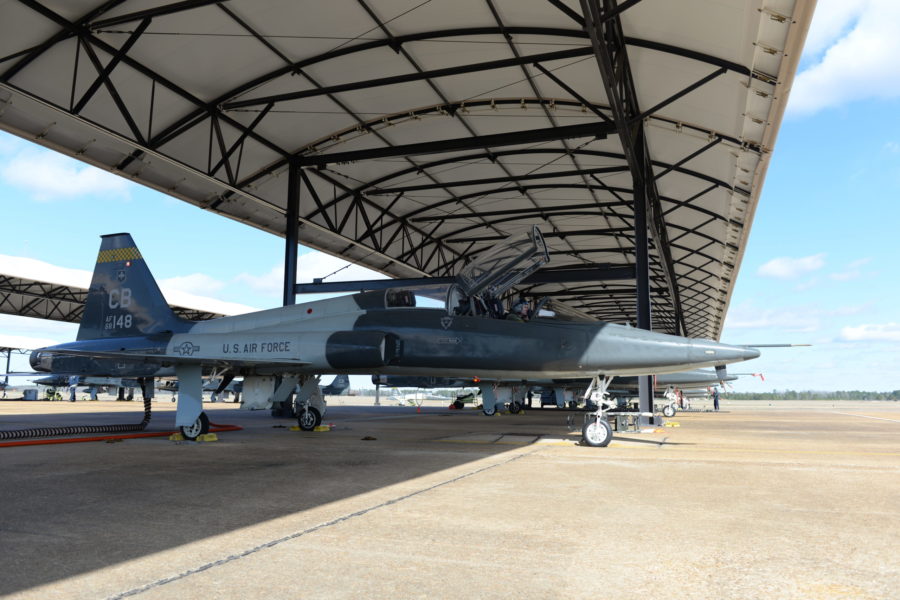Editor’s note: This story was updated Nov. 23 to clarify the location of the February 2021 crash.
Less than two weeks after a T-38 trainer aircraft crashed near Columbus Air Force Base, Miss., another experienced an in-flight emergency that ended with the pilot executing a gear-up landing Nov. 18.
The pilot landed the aircraft, a T-38C, successfully and was OK, a base spokesperson said in a press release.
The exact cause of the incident is still being investigated, but the emergency was first reported about 10:45 a.m. local time and involved a malfunction with the landing gear, the press release stated.
“Response crews executed emergency procedures successfully,” the release added.
While the incident did not leave anyone injured, it does mark another emergency for the T-38 fleet at Columbus. On Nov. 7, a T-38A pilot was forced to eject after an in-flight emergency. That aircraft crashed.
And in February 2021, two pilots—a USAF instructor pilot assigned to the 50th Flying Training Squadron at Columbus and a Japan Air Self-Defense Force student pilot—died in a T-38 crash at Dannelly Field near Montgomery, Ala. The crash was later attributed to spatial disorientation.
Other T-38 crashes and incidents in the last few years have occurred at other bases. One pilot died and two more were injured in a November 2021 incident involving two T-38s at Laughlin Air Force Base, Texas. In February 2021, a T-38 at Beale Air Force Base, Calif., also had to execute a gear-up landing.
Gear-up, or “belly,” landings are rare but do occur. An A-10 pilot was forced to execute one in April 2020, and this past January, a South Korean F-35 pilot had to perform one.
The supersonic T-38, built by Northrop, entered service in 1960 and has been modified a number of times to restore its structural strength and improve its training capabilities. The Air Force is developing the Boeing T-7A to take its place, but the T-38 fleet is not expected to be fully retired until about 2030.
The Air Force uses the T-38 for advanced undergraduate pilot training for pilots headed to fighters and bombers, as a companion trainer for some aircraft, and as a graduate-level fighter training platform. The type is also used as an “aggressor” aircraft to provide sparring partners for some USAF fighters.
